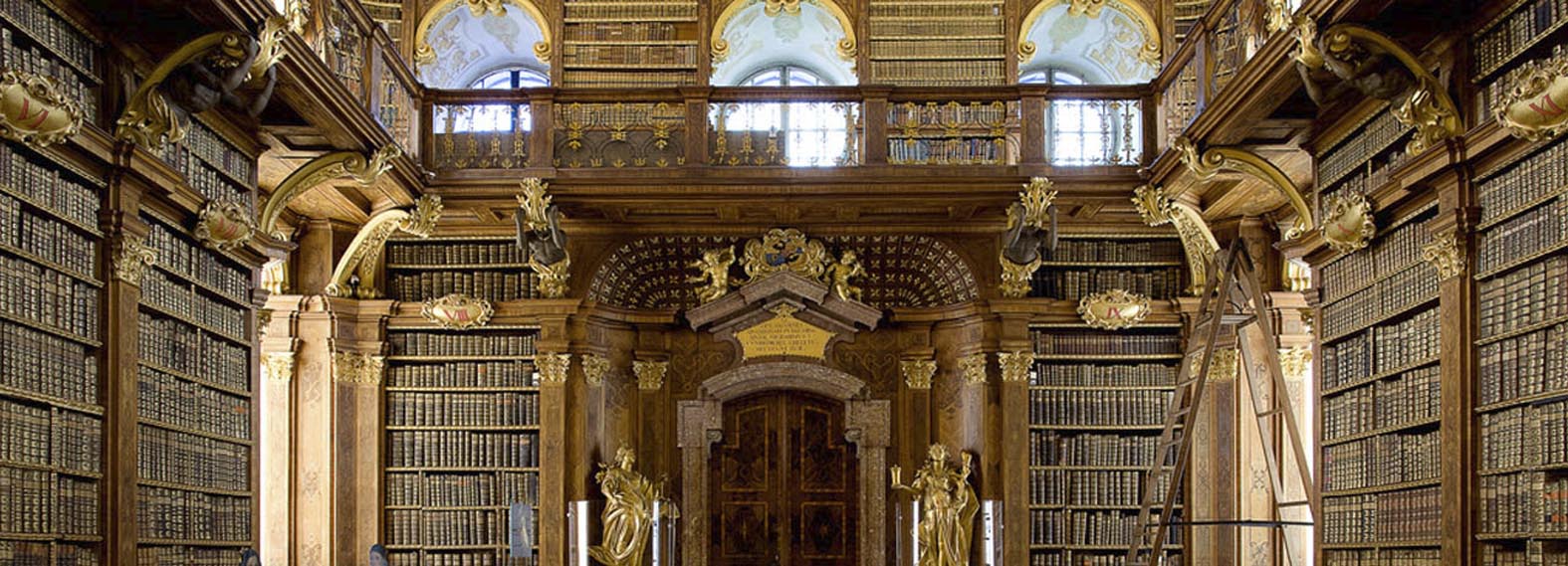
OR BUILD AN 18TH AND 19TH CENTURY LIBRARY
When we became involved in the book business thirty-five years ago, we would visit book dealers, book shows, and bookstores from one end of this country to the other. We often traveled to Europe asking book dealers if they had any leather bound books. Most of the dealers and shop owners we dealt with in those days were mortified with our query. Some even seemed insulted by our questions. A typical reply from very perturbed book dealers would go something like this, “Sir, we do not have leather books per se. We do not deal in just leather books, for what we are interested in is the content of the books, not the type of covering or binding …. “
This kind of reaction underscores what we encountered for many years. Our feeling, and the feeling of very few others at that time, was that the leather bindings of many of these books would be worth far more than the actual content of the books. To most, this was simply a bibliophile kind of heresy! Since our early days of buying books and fine bindings, we have seen this field of collecting leather bindings simply explode with interest, and with this interest the reality of “supply and demand” emerges. As more people became interested and involved in collecting these fine leather books, fewer fine leather bindings were available. As a result, in the past several decades in particular, a field all of its own emerged – the field of antique leather bindings. The past twenty-five years have seen antique leather books change from simply things of beauty to one of the hottest antique collectibles. This has created significant value and return for those who have invested in fine antique leather bindings. Collecting them has indeed become a business all its own within the vast book trade.
This article is primarily written to address the investment value of leather-bound antiquarian books. In the past, collectors traditionally placed a premium on specific types of books such as first editions, signed books, illuminated manuscripts, and the like. These types of specialties were, and are still, highly sought after. There has always been keen interest in extraordinary fine bindings, particularly well-preserved examples of a master binder’s work. Those items still command premium prices, in most cases more than ever before.
What is different is that regular antique leather bindings and sets have also become extremely desirable and rare. Books, that just ten or fifteen years ago could be purchased for little or nothing, have now seen an unprecedented rise in popularity and value. Again, it’s the old story of supply and demand. No one doubts or questions the beauty of antique leather bindings. One merely has to walk into a room where the bookshelves are aglow with the beauty of fine calf and Moroccan leather bindings, and the warmth of the room simply embraces you. Even when one walks into a room and there is simply a grouping of leather books, less than a shelf full, your eye is automatically drawn to “the look” of the fine leather bindings. To pick up a book and to feel the supple leather and examine the fine artistry and craftsmanship is a wonderful experience in and of itself.

